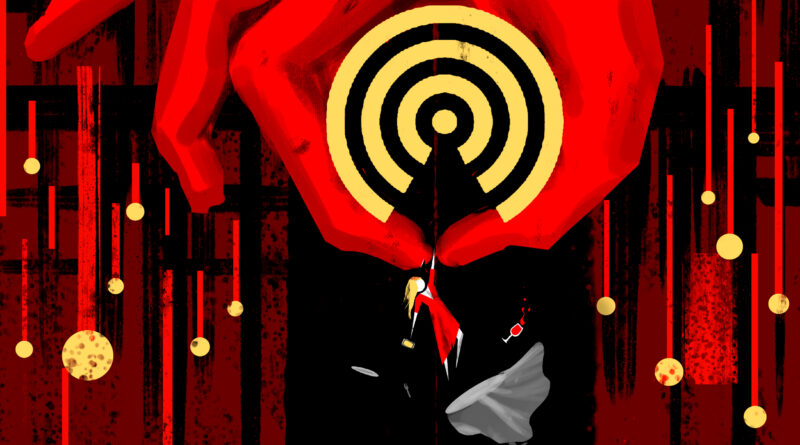Drop: Bringing Back Happy Endings
Illustation by Nick Latham
I recently watched the premiere of “Drop”, a thriller directed by Christopher Landon and starring Meghann Fahy and Brandon Sklenar. The film follows a tense series of encounters between the main character, Violet Gates, and an anonymous antagonist who contacts her through Digidrop (the film’s version of Airdrop). It was the first thriller I’ve seen in a while that actually felt thrilling. It was also the first movie I’ve seen recently that ended happily (in a way that could never happen in real life) which felt nostalgic and oddly comforting. While the film didn’t break new ground, its 84% rating on Rotten Tomatoes shows that many viewers, like me, appreciate a story with a feel-good ending, especially after a suspenseful ride.
The film starts with heavy emotions. We learn about Violet’s recent past, including the loss of her abusive husband. After spending time adjusting to life as a single mother, she decides to try dating again and meets Henry Campbell, a photographer for the mayor. Their dinner date at a high-end restaurant becomes the primary setting of the film. Shortly after Violet arrives, she begins receiving Digidrops from a stranger. At first, they’re silly memes (which many audience members can relate to), but they quickly become personal and unsettling. Violet shares her concerns with Henry, who tries to help her identify the sender while still keeping the date light and enjoyable.
But things quickly escalate. The Digidropper reveals that someone is waiting at Violet’s house, ready to harm her young son and sister unless she follows a set of disturbing instructions—most significantly, to kill her date. From that moment on, she is entirely on her own.
The director makes excellent use of red herrings throughout the plot. It’s difficult to figure out who the Digidropper is, even though they’re introduced early on and referenced often. As the tension builds, the Digidropper commits increasingly horrific acts that prove they’re capable of real violence, especially toward Violet’s family. The pressure continues to mount, and the film keeps you guessing. One of the most interesting aspects of the story is how the climax occurs right when you expect things to resolve—when Violet discovers the Digidropper’s identity. She comes up with a brilliant plan to stop them but makes a critical mistake by revealing her victory too early. Her need to feel in control backfires, putting her, her family, her date, and everyone at the restaurant in immediate danger.
What follows is a chaotic, high-stakes 15-minute sequence that had me convinced the movie would end in tragedy.
But against all odds, it doesn’t.
The movie ended with a son who had saved his mother’s life with a toy car, a sister with a broken arm, and Henry hospitalized but doing well especially because he and Violet are now in a happy (somehow trauma free) relationship. It’s the kind of ending that doesn’t make logical sense, but it was exactly what I needed after a long week. I left the theater smiling, feeling hopeful that even the worst situations can take a drastic turn like they did in the film.
We often praise stories that challenge us, innovate, or master a specific craft. But there’s also value in stories that let us escape. Sometimes, it’s nice to see everything work out for the characters you’re rooting for. Movies with “happily ever after” endings are common for younger audiences, but I think adults could use them too. As life becomes more complicated and reality more demanding, there’s something deeply comforting about stories that allow us to believe—even if just for a moment—that despite all odds, things really can end well.
